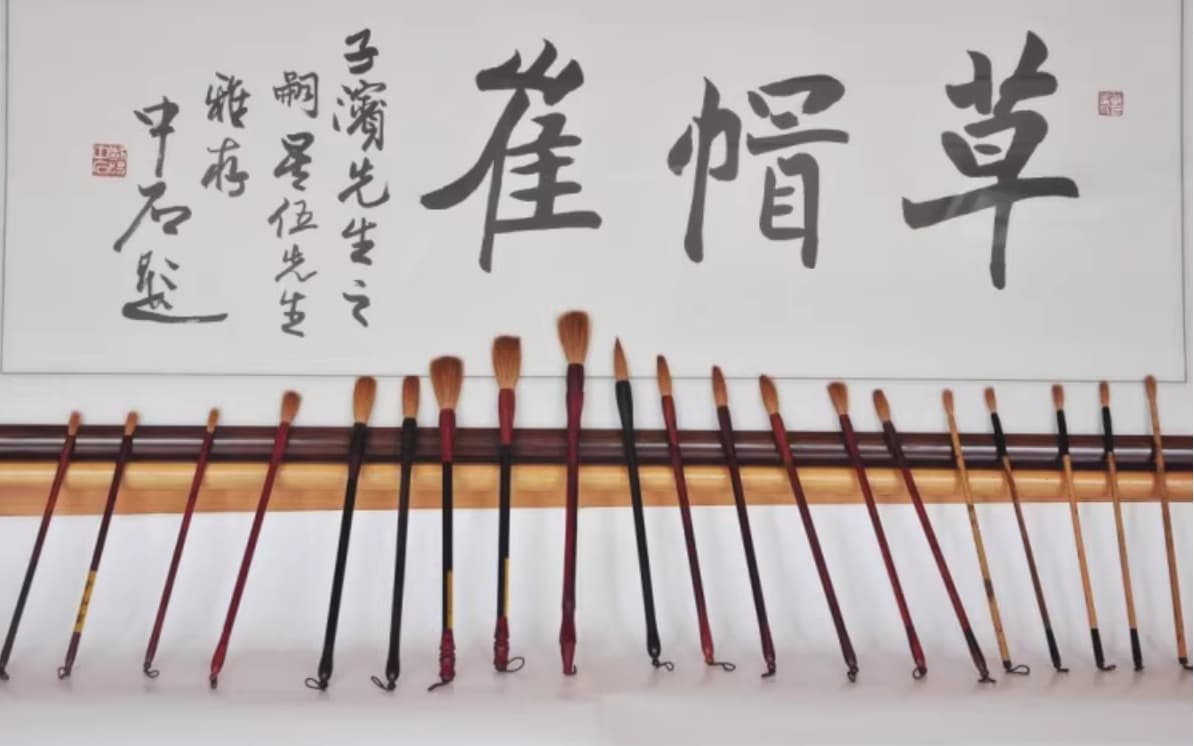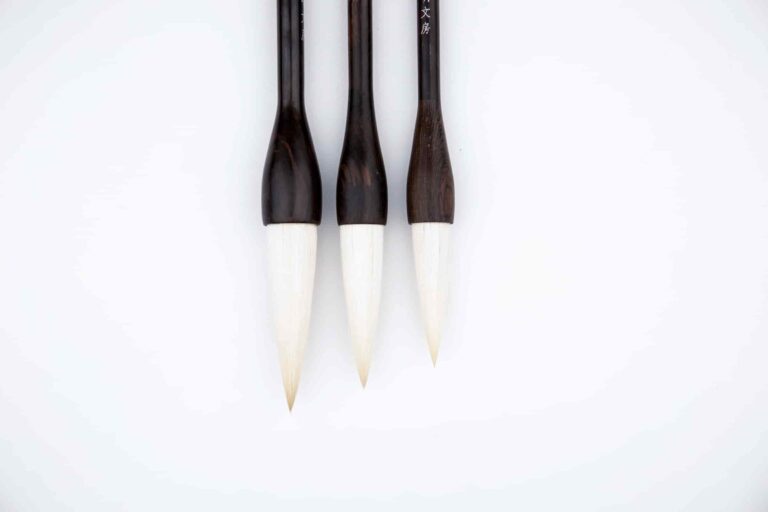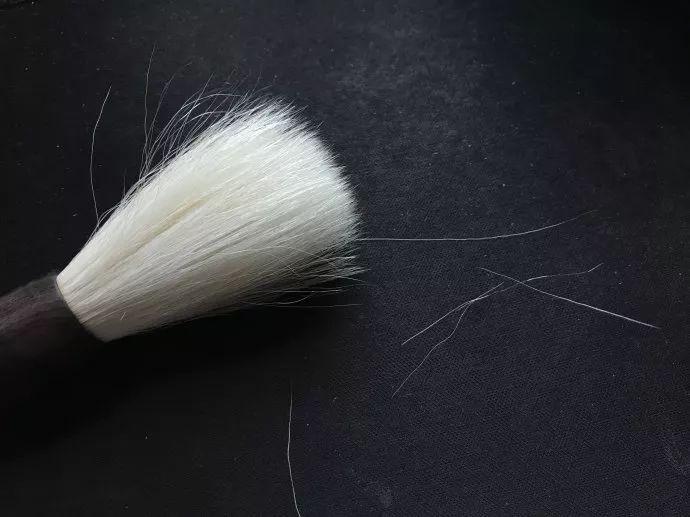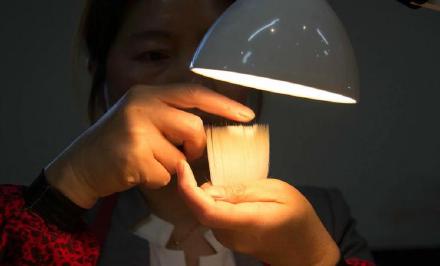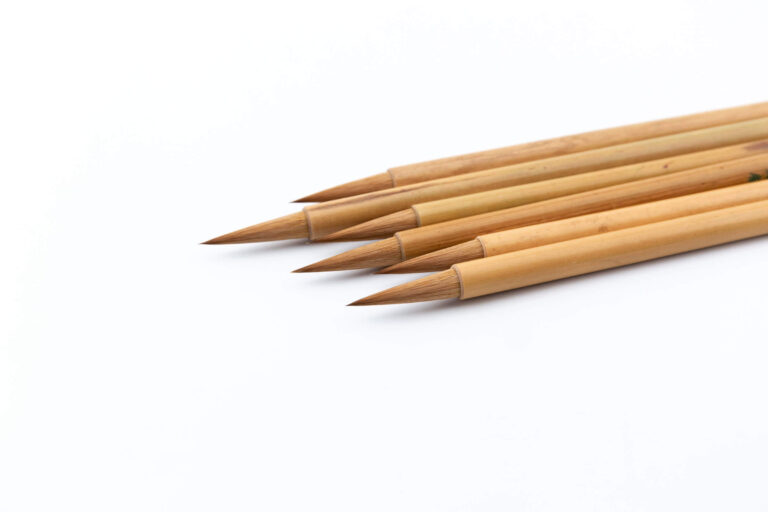What Brush Does Tian Yunzhang Use: Complete Caomao Cui Guide
Professor Tian Yunzhang is the older brother of Tian Yingzhang. While he doesn’t earn as much from calligraphy training as his younger brother, Professor Tian became widely known through his video series “Tian Yunzhang Calligraphy Lecture: Daily Topic, Daily Character (365 Episodes Online, Ad-Free)” recorded for Northern Network.
Qi Ming previously posted this video series on a personal blog, which attracted many Chinese calligraphy learners who contacted Qi Ming to request these teaching videos. Later, many friends asked what brush Professor Tian used in his daily videos, or simply asked where to buy the brushes Tian Yunzhang uses.
To help everyone learn more about Professor Tian Yunzhang’s preferred brushes, Qi Ming has compiled today’s article.
First, through various channels, Qi Ming learned that when Professor Tian recorded “Daily Topic, Daily Character” videos, he used Caomao Cui brushes. So what’s the story behind these Caomao Cui brushes? What are their crafting techniques? What makes their material selection special? Let me explain step by step.
The Origin of Caomao Cui Brushes
To understand Caomao Cui brushes, we must first learn about their founder – Mr. Cui Zibin.
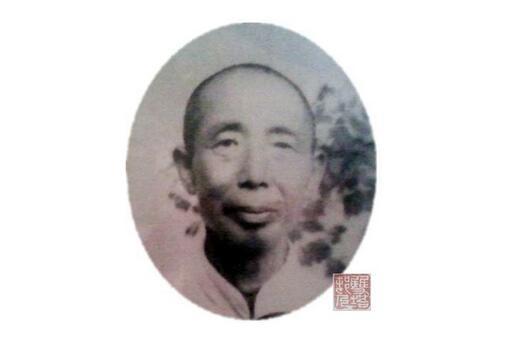
Cui Zibin (1907-1975), courtesy name Hongwei.
At age 14, Cui Zibin was introduced to Li Fushou Brush Shop in Beijing as an apprentice. He and Li Fushou were fellow disciples under the same master. Later, Cui developed his own unique style and became skilled at making excellent brushes, becoming a famous brush-making expert in Beijing at that time.
At 18, Cui completed his apprenticeship. At 21, he returned to Renqiu, Hebei Province to start making brushes. This is why Caomao Cui brushes are also called Renqiu brushes.
Additionally, it’s said that Cui Zibin wore a straw hat year-round, summer and winter. The nickname “Caomao Cui” (Straw Hat Cui) came from this habit, and his brushes naturally became known as Caomao Cui brushes.
Here, Qi Ming must share a small story seen on a Sina blog called “Shuangta Village Person.”
During the Japanese invasion, the Yanling Team anti-Japanese organization was established in Baiyangdian. People from Shuangta Village, where Cui Zibin lived, also joined this organization.
When the Japanese suffered defeat at Baiyangdian, they wanted revenge on the Yanling Team. When Japanese soldiers entered the village, Yanling Team members couldn’t escape back to Baiyangdian in time, so they hid in the village’s old temple. The soldiers searched everywhere without success. All villagers were gathered in front of the temple, where there was a tunnel entrance under the statue of Guan Di – the team members were hiding in this tunnel.
The soldiers dragged two people into the temple for interrogation, one of whom was Cui Zibin. When questioning yielded no results, a soldier smashed his rifle butt against Cui Zibin’s left leg. Cui fell to the ground, and the soldier struck again, directly breaking Cui’s leg.
In this situation, Cui Zibin could have simply given the soldiers a look, letting them know the Yanling Team members were hidden in the tunnel under the statue, and his leg might not have been broken. But he didn’t do this. Such a person, in any historical context, would be considered a hero. This shows that Mr. Cui Zibin was not only excellent at making brushes but also had outstanding character.
Now, back to brush-making topics!
Brush-making is actually very complex. One skill involves carving patterns on brush handles. Cui Zibin practiced diligently, and with natural talent, could carve over 80 characters of poetry on a single small regular script brush handle. He could also carve “Seven Sages of the Bamboo Grove” and “Fish Hiding Sword” images with remarkable likeness.
Not only that, Cui Zibin had a special skill – carving patterns on brush handles with both hands behind his back. Left hand holding the handle, right hand holding the carving knife, relying entirely on feel without looking. In under 5 minutes, flowers, birds, fish, insects, landscapes, and figures would appear lifelike on the handle. It’s said that fewer than 3 people in Beijing possessed this skill, and he was one of them.
Due to his excellent brush-making skills, his customer base grew. He often delivered brushes to users and quickly befriended many calligraphers and painters, the most famous being Qi Baishi.
One day, Qi Baishi came to Cui Zibin holding a brush: “This brush was bought from Japan with silver dollars. It’s shameful for us Chinese to write and paint with Japanese brushes. Can you create something better and cheaper within a year?”
Encouraged by Qi Baishi and to support the national movement boycotting Japanese goods, Cui Zibin spent nine full months and over a hundred trials before finally succeeding. For this, Qi Baishi published an article in People’s Daily praising Cui’s brushes, calling for boycotting Japanese goods, and saying Cui Zibin’s “Seven Purple Three Goat” brush surpassed Japanese brushes.
Caomao Cui Brush Crafting Process
The Caomao Cui brush-making process reportedly involves 120 steps. Among these, selecting hair, mixing hemp, pulling materials, and choosing brushes are most important, with the saying “selecting brush tips is like taking a pulse, choosing brushes is like diagnosing illness.”
Caomao Cui brushes emphasize “hemp as bones, hair as flesh, front tip aligned, second tip loose, body method neat.” During production, goat hair is first soaked in hot water, combed straight and aligned, then mixed six or seven times, matched six or seven times, with hemp properly added and combed, cut six or seven times, combed six or seven times, matched six or seven times, pressed with feet, then mixed three or four more times, matched three or four times, mixed evenly and formed into a brush, then leveled according to hair softness and hardness – only then is production complete.

Due to excellent Caomao Cui brush crafting, one brush can often serve multiple purposes – suitable for both calligraphy and painting, large and small characters alike – truly remarkable. Additionally, Cui brushes use minimal decoration, with brush heads that spread out, creating an ancient, simple, and distinctive style.

Caomao Cui brushes are indeed very simple in design (image from Caomao Cui Taobao store)
Caomao Cui Brush Materials
Brush quality closely relates to hair quality. Excellent brush-making hair must have: fine tips without splitting, undamaged surface structure, natural luster, and good ink absorption. Different animals have very different hair qualities, and even within the same animal, different body parts have significantly different hair qualities. Additionally, breed, origin, season, and health status all affect hair quality.
1. Main Material – Northern Winter Wolf Hair
Wolf hair has shorter tips, becoming hollow 5mm from the tip, with large hollow chambers in the middle section. Therefore, wolf hair has good flexibility, strong elasticity, straight and wear-resistant qualities, making it the best brush material. (For more about wolf hair, see “How to Identify Authentic Wolf Hair Brushes”)
2. Supporting Material – Hemp
All Cui brushes include hemp. One of the “Caomao Cui” brush-making family traditions concerns hemp use: “hemp as bones, hair as flesh” and “no hemp, no brush.” Natural hemp serves three purposes: strengthening, ink absorption, and maintaining brush shape – very important. The hemp-mixing process is complex, starting with large amounts of hemp, then combing out most during production, leaving only small amounts at the end.

This is hemp bundled for sale that Qi Ming photographed during a visit to Wengang
Without hemp, production costs could be greatly reduced. Of course, here Qi Ming should mention that the brushes Qi Ming custom-makes don’t include hemp, but have high animal hair content. Qi Ming personally likes this type of brush composition, and many calligraphy friends who’ve used Qi Ming’s custom brushes say they handle very smoothly. It’s all personal preference – nothing wrong with either approach. (Qi Ming note: Regarding brush-making, strengthening materials are usually necessary. Here Qi Ming recommends a previous article about visiting Wengang: “May Day Visit to Wengang: Worthy of Being China’s Brush Capital”)
3. Supporting Material – Goat Hair
Uses premium northern goat hair with large water absorption, strong elasticity, and long tips. Northern goat hair is quite difficult to select. Cui Laowu sometimes spends a whole day at fur markets and can’t find a single suitable hide, making costs higher.

Such long goat hair is actually hard to find, so expensive prices are understandable.
4. Supporting Material – Pig Bristles
Pig hair is stiff, elastic, tough, and doesn’t break easily – excellent material for large brushes. Using pig hair as padding in the brush belly and waist gives writing more strength. Few use pig bristles now, largely due to difficult raw material collection. Traditional free-range pig bristles are needed – commercial farm bristles don’t work well, so many brush makers now substitute nylon.
Caomao Cui Brush Heritage
Though Mr. Cui Zibin passed away years ago, his skills were inherited by descendants. His sons – eldest Cui Xingwu, second Cui Xingrong, and fifth Cui Xingmao – became second-generation “Caomao Cui” brush makers (called “Mr. Zibin Second Generation”).
Many famous domestic calligraphers and painters, including Dong Shouping, He Jiaying, Qian Shaowu, Fan Zeng, Ouyang Zhongshi, Liu Bingsen, Tian Yingzhang, and Tian Yunzhang (this confirms online claims that Professor Tian Yunzhang used Caomao Cui brushes when recording his daily videos), love using their brushes and praise them as “exquisite brushes and wonderful ink,” saying they match the original “Caomao Cui” quality.

Professor Tian Yunzhang’s brush testing work
Today, Cui Xingwu’s son Cui Zhigang, Cui Xingrong’s son Cui Zhiguo, and Cui Xingmao’s son Cui Zhiyuan continue their fathers’ work. Additionally, there’s Cui Guoguang, son of Cui Zibin’s third son Cui Xinghua. “Caomao Cui” brushes now have third-generation inheritors.
After reading about Caomao Cui brushes above, everyone must deeply feel how difficult it is to make good brushes. Writing this, Qi Ming suddenly thought of the classic couplet from Tongrentang Pharmacy: “Though processing is complex, we dare not save on labor; though ingredients are expensive, we dare not reduce materials,” and the motto “No one sees the careful preparation, but heaven knows the sincere heart.”

Tongrentang couplet
Though this is a pharmacy couplet, Qi Ming thinks these ancient teachings equally apply to Caomao Cui brushes and other industry brands.
Now, the Caomao Cui golden brand has passed to the third generation. Whether this generation can “stay true to original intentions,” make brushes with care, and pass down ancestral skills – let’s wait and see!

Professor Ouyang Zhongshi’s inscription: “Accidentally discovered this brush, ancient craftsmanship, simple and pure. After one trial, both heart and hand felt smooth. Seeking to know its source, I learned it follows Caomao Cui’s traditional methods, fortunately passed to the second generation. For brush tip excellence, nothing surpasses this. In the year Gengwu, sincere words after Zhongshi tested the tip.”
Finally, Qi Ming sincerely wishes Caomao Cui brushes will get better and better, and hopes Cui family descendants can work together with unity, upholding Cui Laoyezi’s skills, developing and expanding Caomao Cui techniques, allowing more calligraphy enthusiasts to use Cui family’s excellent brushes and experience the superior brush-making skills of Caomao Cui brushes!
Here Qi Ming recommends several previous articles about the Four Treasures of the Study, which might help you understand the Four Treasures and begin systematic calligraphy study.
Top 10 Chinese Calligraphy Brushes: The Ultimate Guide to Selection and Care
The 5 Best Chinese Ink Brands: Properties, Selection Criteria & Care Guide
Top 10 Chinese Xuan Paper Brands: Selection Guide & Care Tips

